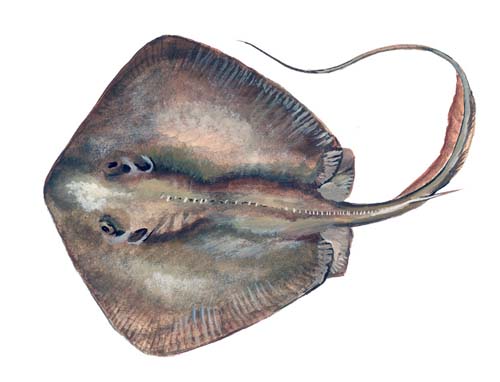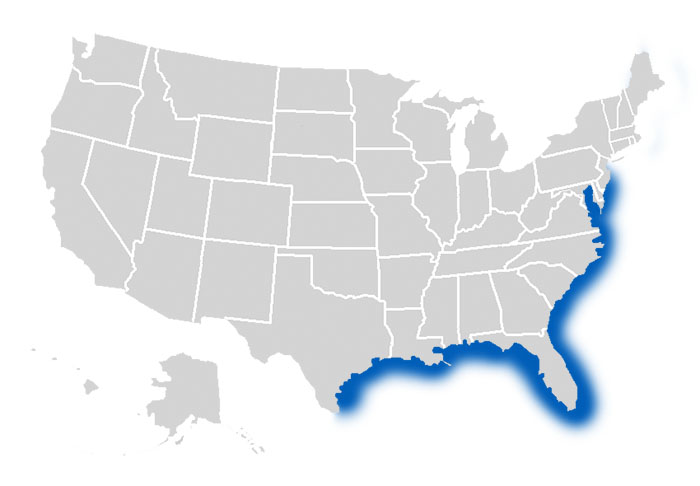Bluntnose Stringray is typically caught by accident while fishing for other game fish. The best method for catching Bluntnose Stringray is using bottom rigs and squid, peeler crab or pieces of fish for bait

Habitat: Ocean, Bay, Estuary
How to identify Bluntnose Stingray
The bluntnose stingray has a rounded snout and a large, disc-like body with semi-triangular shaped pectoral fins. Its pectoral fins are almost the size of its body. The bluntnose stingray’s tail has a prominent fold on the top and bottom.
Where to catch Bluntnose Stingray
Bluntnose stingrays are present in the Atlantic Ocean from Venezuela up to Massachusetts, northern Gulf of Mexico, and the Greater/Lesser Antilles. They aren’t found in the southern Gulf of Mexico or in the Caribbean. In the summer, they travel in schools migrating north to seek out bays and estuaries, whereas in the winter, they go back to their southern territories where it’s warmer. Look for these rays in grassy, sandy/muddy flats, bays, lagoons, and estuaries that range from a few feet to about 30 feet deep.

The following are habitats where you can catch Bluntnose Stingray:
How to catch Bluntnose Stingray
Anglers don’t care much for bluntnose stingrays because they are often caught while pursuing other fish. Those who want to try catching one should try using bottom rigs baited with strip/cut baits such as squid, fish, or peeler crabs.
The following are effective fishing methods and techniques for catching Bluntnose Stingray:
Best Lures, Bait & Tackle to catch Bluntnose Stingray
Since the bluntnose stingray’s natural diet consists of clams, shrimps, marine worms, fishes, and crabs, these are all good options to use as bait.
The following are fishing lures, bait and tackle that can be used to catch Bluntnose Stingray:



